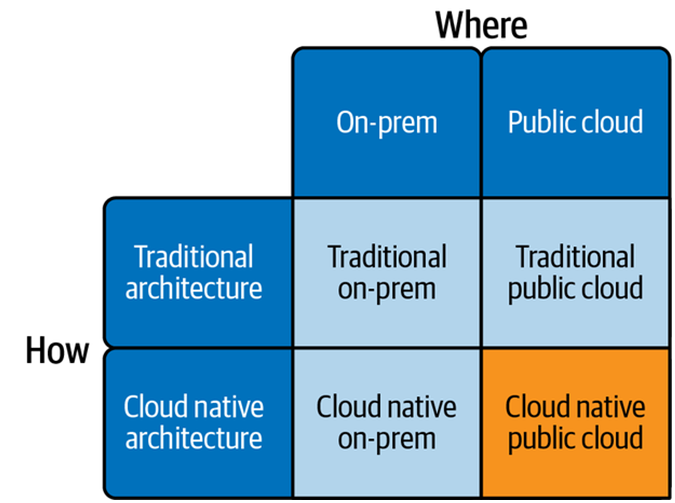The essential truth of the cloud is that it functions as a distributed system. This key characteristic renders many assumptions inherent in traditional development obsolete.
These misconceptions, dubbed the fallacies of distributed computing, were first identified by L Peter Deutsch and colleagues at Sun Microsystems:
- The network is reliable.
- Latency is zero.
- Bandwidth is infinite.
- The network is secure.
- Topology doesn’t change.
- There is one administrator.
- Transport cost is zero.
- The network is homogeneous.
Each of these points represents a hurdle that must be surmounted when attempting to construct a cloud from scratch. Thankfully, cloud providers have devoted substantial engineering resources over the past two decades to build higher-level abstractions through APIs, effectively addressing these issues. This is precisely why digital natives have an edge—they are attuned to cloud native development, a methodology that leverages this groundwork.
Cloud native development acknowledges the distinct characteristics of the cloud and capitalizes on the high-level abstractions provided by cloud provider APIs. It’s a development style in tune with the realities of the cloud, embracing its idiosyncrasies and leveraging them to their full potential.
Distinguishing Cloud Hosted from Cloud Native
Understanding the difference between cloud hosted and cloud native applications is fundamental. To put it simply, the former is about where, and the latter is about how.
Applications can be cloud hosted, running on infrastructure provided by a public cloud provider, but architectured traditionally, as if they were operating in an on-premises data center. Conversely, applications can be designed in a cloud native manner and still be hosted in an on-premises data center, as shown in Figure 1-4.

Figure 1-4. Cloud hosted is where, cloud native is how
When I refer to cloud native, I am discussing the development style, application architecture, and abstraction provided by the cloud APIs, rather than the hosting location.
This book primarily explores the construction of cloud native applications using Google Cloud, which embraces both cloud hosted and cloud native principles, the bottom right in Figure 1-4. However, keep in mind that much of the information shared here is also applicable to on-premises private and hybrid clouds, particularly those built around containers and Kubernetes, such as Red Hat OpenShift, VMWare Tanzu and Google Anthos, bottom left in Figure 1-4.